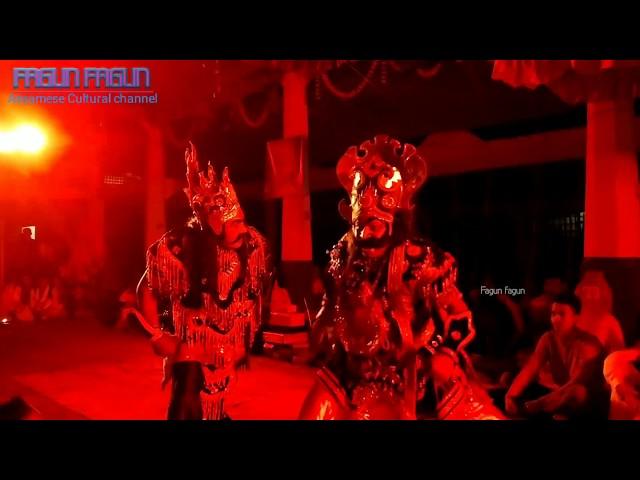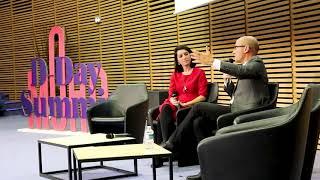
বিপ্ৰ-দামোদৰ আখ্যান | Assamese vauna new | assamese vauna competition 2021 majuli
শ্ৰী শ্ৰী শংকৰ সেৱা শ্ৰম সাৰ্বজনীন সাংস্কৃতিক বিকাশ কেন্দ্ৰৰ সৌজন্যত সদৌ অসম ভিত্তিত পতা ভাওনা সমাৰোহ আৰু প্ৰতিযোগিতা ( আমন্ত্ৰণমূলক ) ১১ জানুৱাৰী
নাট: বিপ্ৰ-দামোদৰ আখ্যান
Bhaona is a traditional form of entertainment, always with religious messages, prevalent is Assam, India. The history of Assamese drama begins with the plays of Mahapurusha Srimanta Sankardeva (1449-1568) written in the early sixteenth century. These plays are popularly known as Ankiya Nats and their staging is known as bhaona. Bhaona is a performing art form. It is a simple drama which shows the victory of truth at the climax, generally using fictitious or mythological kings, queens, demons, Gods, soldiers etc. The story generally depicts some initial superficial triumph of evils over good, but it shows the ultimate victory of good with intercession by the Gods(Lord Krishna).
Bhaona was created by Sankardeva. He himself wrote seven dramas (called Onkia Naat) for performance in Bhaona. The first Bhaona was Chihna-yatra, where he himself played the role Bishnu.The particular form of religious school established by Sankardeva is called Eksaran Bhagawati Dharma (literally meaning religion of devotion to single God). He had been for pilgrimage twice to most of the Hindu holy places twice and had observed the folk-music and culture of many religious and cultural schools. Then he created Bhaona picking up ingredients from all those cultures. Later, many of his followers (including Madhabdeva, the most famous disciple of Sankardeva) also wrote numerous dramas for Bhaona. There are also many anonymous dramas available, mostly in hand-written form.
'Ankiya' means one act and 'Nat' means drama. Therefore, 'Ankiya nat' simply means one act play. These plays are comprised of an orchestra who are called 'Gaayan'(singers) and 'Baayans'(instrumentalists) and actors. The orchestral attire is stark white and the actors wear glittering costumes representing various kings, queens, demon and animals. The performers pass through an archway of lights, which is called 'Agni Garh'. There is one Sutradhar who begins the play by narrating the story of the play who acts as the chorus of the English plays. The Sutradhar explains the story along with the orchestra in between the play to make it easier for the audience to understand. In Ankiya Nat, performance begins in the morning with singing and dancing to the music of drums, the entourage emerging from the 'Agni-Garh' i.e. archway of lights opposite the shrine. After the distribution of prasada or sacred food to the musicians, the 'Sutradhar' or narrator makes his entrance, and after paying his respects to the god, recites a verse from the play at hand and presents a song.
In a Bhaona real men and women play the roles of different characters. They speak dialogues in Brajawali often in lyrical form which is also created by Sankardeva he used this special language in Bhaona because the Sanskrit, which was the original language used in the Hindu religious texts, was difficult for common people; on the other hand, he wanted the language spoken in the drama to be somewhat different, to keep the divine touch). Nowadays, though, Bhaona is performed in spoken Assamese language in upper Assam. The good and bad characters indulge in fighting, depicted with ancient weapons like bow and arrow and swords. The entire drama is performed in the middle open space of Namghar (also a creation of Sankardeva; an open house, with imaginary God's seat established towards the North or East end (called Manikut), and the rest of the house is used for performing devotional songs or other religious festivals), surrounded in three sides by audiences (they sit on mats), having the side towards the Manikut kept open. Different parts of the drama are connected by lyrical songs performed by an anchor (called Sutradhar/ Sutradhari), dressed in special dresses and his companions. Nowadays, in many places, Bhaona is performed in raised stages too. The day before the Bhaona is called Ganica; characterized by a similar but long instrumental musical.
The main drama is generally proceeded by a performance of the Gayan-Bayan. Its a musical, performed with traditional instruments (Khol, Taal, Doba and Nagara; all the instruments were also created by Sankardeva); with different hard and fast sequences, and formulas, which are also named differently.
Don't forget,Please SUBSCRIBE our channel.
#vauna #bhaona #AssameseVauna
#fagunfagun#DhurbaCharitrafullmovie
@ FAGUN fagun channel..
নাট: বিপ্ৰ-দামোদৰ আখ্যান
Bhaona is a traditional form of entertainment, always with religious messages, prevalent is Assam, India. The history of Assamese drama begins with the plays of Mahapurusha Srimanta Sankardeva (1449-1568) written in the early sixteenth century. These plays are popularly known as Ankiya Nats and their staging is known as bhaona. Bhaona is a performing art form. It is a simple drama which shows the victory of truth at the climax, generally using fictitious or mythological kings, queens, demons, Gods, soldiers etc. The story generally depicts some initial superficial triumph of evils over good, but it shows the ultimate victory of good with intercession by the Gods(Lord Krishna).
Bhaona was created by Sankardeva. He himself wrote seven dramas (called Onkia Naat) for performance in Bhaona. The first Bhaona was Chihna-yatra, where he himself played the role Bishnu.The particular form of religious school established by Sankardeva is called Eksaran Bhagawati Dharma (literally meaning religion of devotion to single God). He had been for pilgrimage twice to most of the Hindu holy places twice and had observed the folk-music and culture of many religious and cultural schools. Then he created Bhaona picking up ingredients from all those cultures. Later, many of his followers (including Madhabdeva, the most famous disciple of Sankardeva) also wrote numerous dramas for Bhaona. There are also many anonymous dramas available, mostly in hand-written form.
'Ankiya' means one act and 'Nat' means drama. Therefore, 'Ankiya nat' simply means one act play. These plays are comprised of an orchestra who are called 'Gaayan'(singers) and 'Baayans'(instrumentalists) and actors. The orchestral attire is stark white and the actors wear glittering costumes representing various kings, queens, demon and animals. The performers pass through an archway of lights, which is called 'Agni Garh'. There is one Sutradhar who begins the play by narrating the story of the play who acts as the chorus of the English plays. The Sutradhar explains the story along with the orchestra in between the play to make it easier for the audience to understand. In Ankiya Nat, performance begins in the morning with singing and dancing to the music of drums, the entourage emerging from the 'Agni-Garh' i.e. archway of lights opposite the shrine. After the distribution of prasada or sacred food to the musicians, the 'Sutradhar' or narrator makes his entrance, and after paying his respects to the god, recites a verse from the play at hand and presents a song.
In a Bhaona real men and women play the roles of different characters. They speak dialogues in Brajawali often in lyrical form which is also created by Sankardeva he used this special language in Bhaona because the Sanskrit, which was the original language used in the Hindu religious texts, was difficult for common people; on the other hand, he wanted the language spoken in the drama to be somewhat different, to keep the divine touch). Nowadays, though, Bhaona is performed in spoken Assamese language in upper Assam. The good and bad characters indulge in fighting, depicted with ancient weapons like bow and arrow and swords. The entire drama is performed in the middle open space of Namghar (also a creation of Sankardeva; an open house, with imaginary God's seat established towards the North or East end (called Manikut), and the rest of the house is used for performing devotional songs or other religious festivals), surrounded in three sides by audiences (they sit on mats), having the side towards the Manikut kept open. Different parts of the drama are connected by lyrical songs performed by an anchor (called Sutradhar/ Sutradhari), dressed in special dresses and his companions. Nowadays, in many places, Bhaona is performed in raised stages too. The day before the Bhaona is called Ganica; characterized by a similar but long instrumental musical.
The main drama is generally proceeded by a performance of the Gayan-Bayan. Its a musical, performed with traditional instruments (Khol, Taal, Doba and Nagara; all the instruments were also created by Sankardeva); with different hard and fast sequences, and formulas, which are also named differently.
Don't forget,Please SUBSCRIBE our channel.
#vauna #bhaona #AssameseVauna
#fagunfagun#DhurbaCharitrafullmovie
@ FAGUN fagun channel..
Тэги:
#ভাওনা #ৰুহিতাশ্বৰ_ধৰ্ম_পৰীক্ষা #Majuli_vauna_hmaruh_2020 #akhur #matchaya_avatar #shankardev #sivasagar #assamese_bhaona_song #nrisingha_murari #upsc #vauna_gojoketu #vauna #bhaona_competition_jorhat #bhaona_song #assamese_bhaona_competitlon #assamese_bhaona_comedy #krishna_prabesh #Narod #fagun_fagun_channel #bipra_damudar #titabor #golaghat #assamese_vauna_full_movie #probekh #kurma_avatar #assamese_vauna_competition_2020 #vauriea #rukmini_haran #all_assam_vauna #assamese_bhaonaКомментарии:
Кизилташ 1984 86, Феодосия 13
Андрей Процветов
Ray gives out AMP awards
House of Highlights
Fitness 19 AH App Overview
Fitness 19
اغنية الاسير محمد الخطيب
محمد الخطيب











